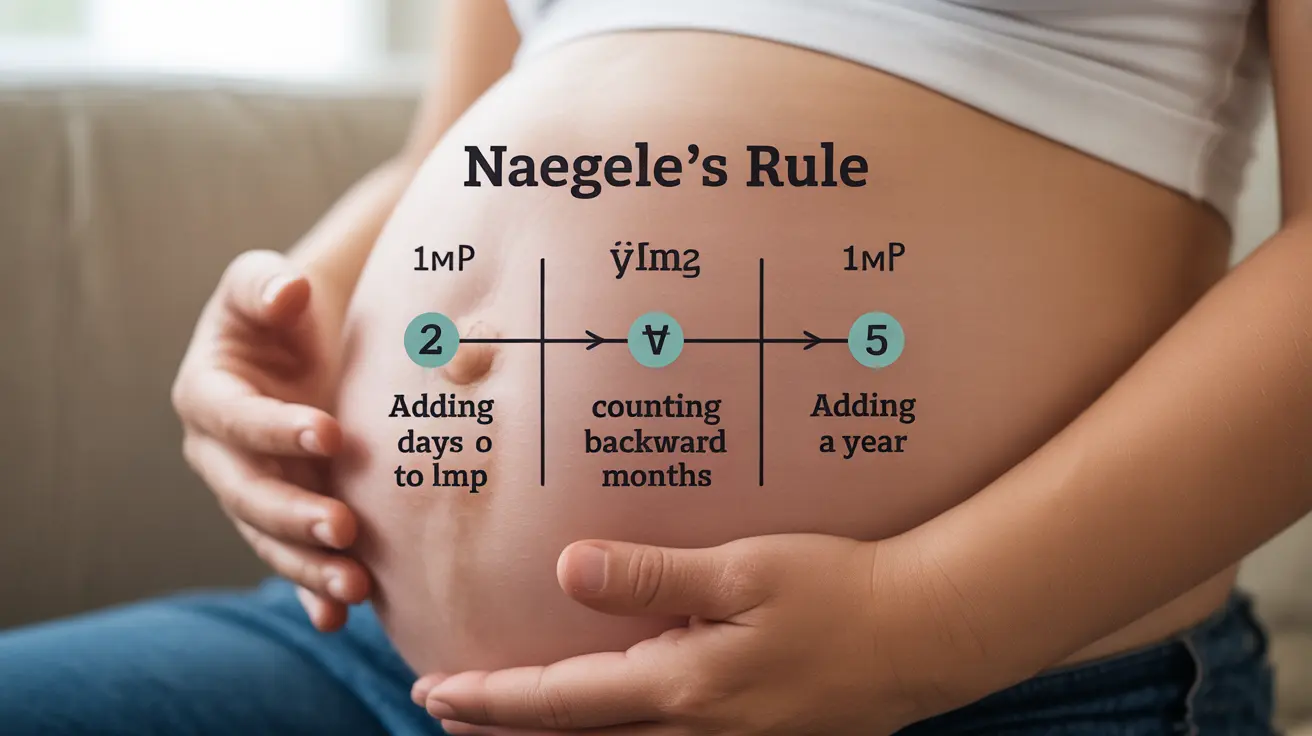For expectant parents, knowing when their baby might arrive is one of the first exciting milestones of pregnancy. Naegele's rule is a time-tested method that healthcare providers use to estimate a pregnancy's due date. This calculating technique, developed by German obstetrician Franz Naegele in the early 1800s, remains a valuable tool in modern prenatal care.
While no calculation method can predict the exact day of delivery, understanding Naegele's rule can help you and your healthcare team better prepare for your baby's arrival. Let's explore how this important calculation works and what factors might affect its accuracy.
How Naegele's Rule Works
Naegele's rule calculates the estimated due date (EDD) by adding 280 days (40 weeks) to the first day of your last menstrual period (LMP). The formula follows these steps:
- Add 7 days to the first day of your LMP
- Count backward 3 months
- Add 1 year
For example, if your LMP began on March 15, 2024, your estimated due date would be December 22, 2024. This calculation assumes a regular 28-day menstrual cycle with ovulation occurring on day 14.
Factors Affecting Accuracy
Several factors can influence the precision of Naegele's rule calculation:
Menstrual Cycle Variations
Not everyone has a textbook 28-day cycle. Longer or shorter cycles can affect when ovulation occurs, potentially making the calculated due date less accurate. Women with irregular cycles may need additional methods to confirm their due date.
Individual Differences
Every pregnancy is unique, and factors such as maternal age, previous pregnancies, and genetic influences can affect gestational length. Research shows that only about 5% of babies are born on their exact calculated due date.
Alternative Dating Methods
Early Pregnancy Ultrasound
An ultrasound performed during the first trimester (especially between weeks 8-13) can provide a more accurate due date estimation. This method measures the developing fetus directly and is considered the gold standard for pregnancy dating.
Conception Date
For those who know their exact conception date (common with assisted reproductive technologies), adding 266 days can provide another way to estimate the due date.
Modern Applications of Naegele's Rule
Today's healthcare providers often use digital calculators and apps based on Naegele's rule, making the calculation process simpler and more accessible. However, they typically combine this traditional method with modern dating techniques for the most accurate prediction.
Frequently Asked Questions
How do you use Naegele's rule to calculate a pregnancy due date?
To use Naegele's rule, take the first day of your last menstrual period, add 7 days, subtract 3 months, and add 1 year. This calculation gives you an estimated due date based on a 40-week pregnancy.
Why might my actual delivery date differ from the due date calculated by Naegele's rule?
Actual delivery dates can vary due to factors including individual variations in cycle length, maternal age, previous pregnancy history, and natural variations in gestational length. Only about 5% of births occur on the calculated due date.
Can Naegele's rule be used if I have an irregular menstrual cycle or a cycle longer than 28 days?
While Naegele's rule can still be used with irregular cycles, it may be less accurate. In these cases, healthcare providers typically rely more heavily on early ultrasound dating for a more precise estimation.
What other methods besides Naegele's rule can estimate my due date during pregnancy?
Other methods include early pregnancy ultrasound (particularly in the first trimester), conception date calculation (adding 266 days), and various digital pregnancy dating tools. Healthcare providers often use a combination of methods for the most accurate estimation.
How accurate is Naegele's rule compared to ultrasound dating in early pregnancy?
Early pregnancy ultrasound (especially between weeks 8-13) is generally considered more accurate than Naegele's rule alone. Ultrasound can directly measure fetal development and is particularly valuable when menstrual dates are uncertain or cycles are irregular.




